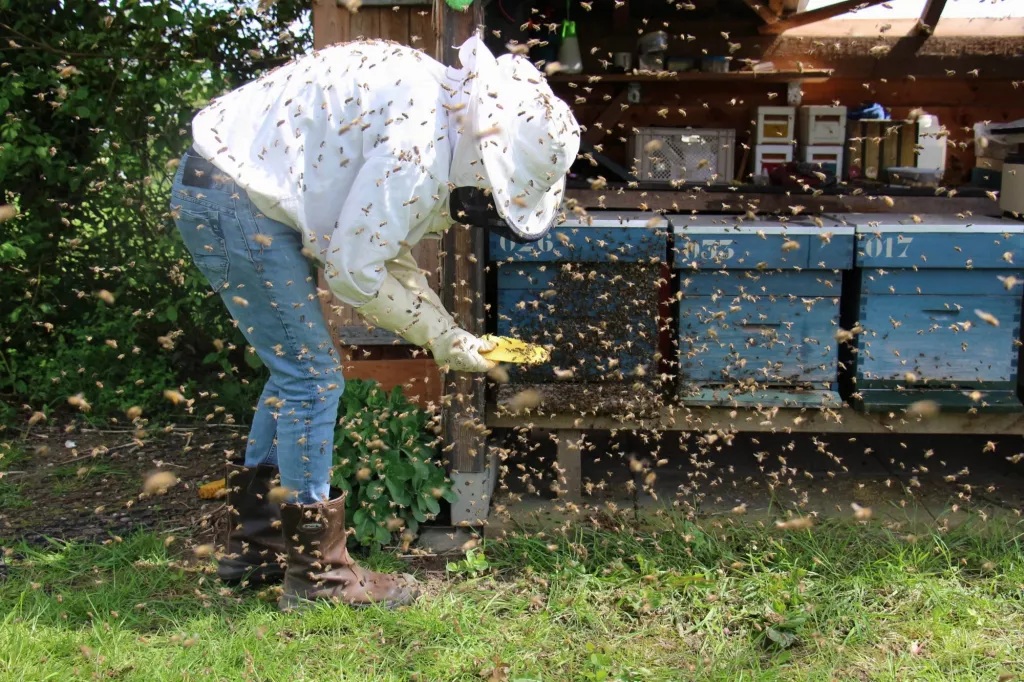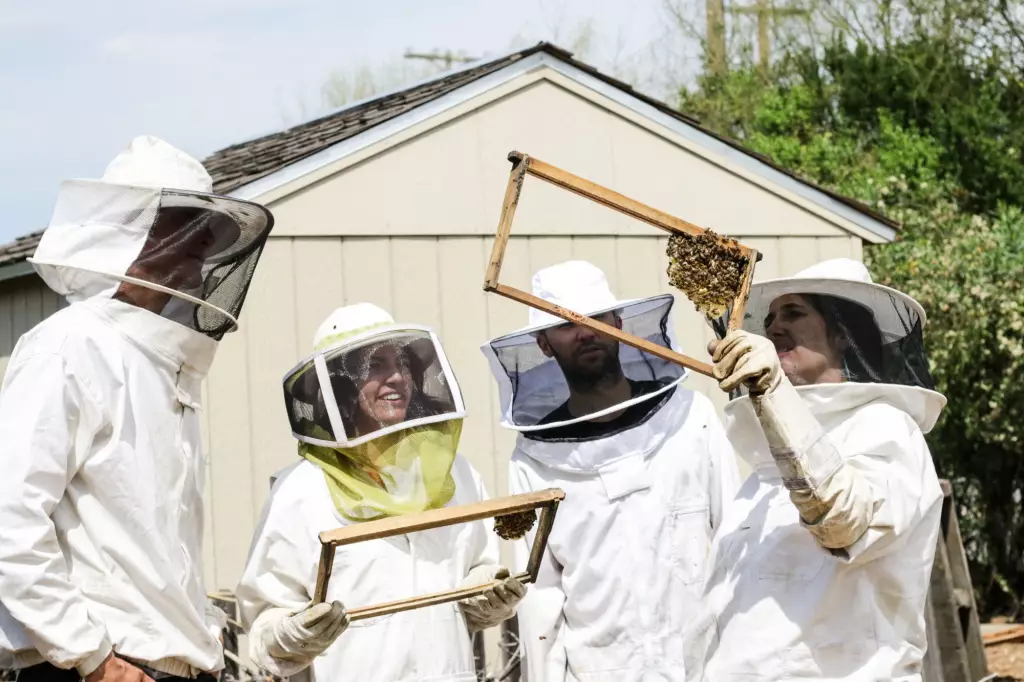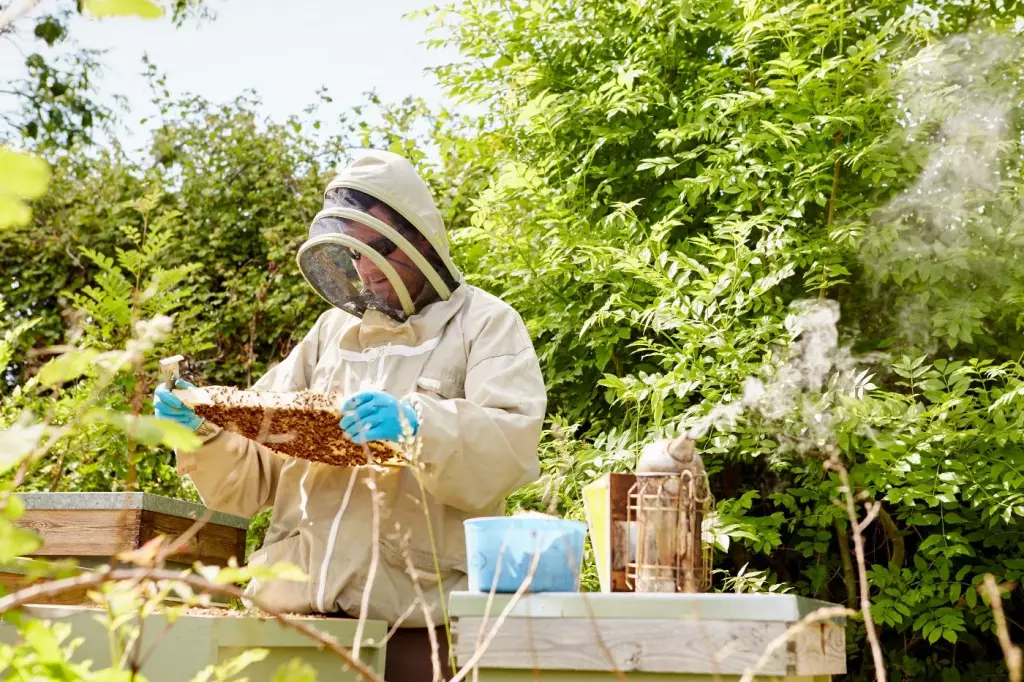How to Get Honey From a Beehive Without Getting Stung
Bees do occasionally sting, mostly only when they perceive a threat. They are not aggressive, just defensive. The last thing they wish to do is sting, because it kills them. Aside from helping yourself, help bees prolong their life by preventing yourself from getting stung
The various ways to protect yourself when getting honey from a beehive without getting stung by a bee include:
1. wearing a protective suit and gear with the appropriate color,
2. using a bee smoker,
3. doing it during sunny days,
4. avoiding standing in front of the hive, and
5. staying calm throughout the process.
Let us discuss these practical ways to prevent you from hurting yourself with a bee sting.
Summary
- You may wear a long-sleeved shirt, pants, and nitrile gloves if you don't want to wear a full-bee suit.
- Cover your face first since facial stings hurt and are aggravating; an eye sting might cause serious, permanent damage.
- If you are allergic to bee stings, keep an EpiPen on hand for unexpected situations.
- You may gently remove the stinger with a knife or a card, not with your fingers.

On this page:
5 Ways to Get Honey Without Getting Stung
Bees are not dangerous insects. You might get stung once or twice, but you shouldn't be concerned about a swarm of bees coming after you. Nonetheless, it is essential to observe proper measures for safely getting honey from them. Through these five ways, I will guarantee that you will have a smooth and fun honey-collecting experience.
1. Wear a protective suit and gear in a light color.
Bees are surprisingly strong for such small animals. They can penetrate clothing with their stings. If the material is thinner than the length of the bee's stinger, they are powerful enough to sting through most materials. Bees have been reported to sting through numerous layers of cotton, denim, rubber, canvas, and even leather.
The clothing must be thick to shield against bee stings. In the sweltering summer months, when beehives need the most care, this clothing is frequently unrealistic. It is why many beekeepers put a lot of effort into establishing appropriate beekeeping practices and mastering bee management.
You might not be protected by clothing, but knowing how bees behave can be helpful. Even if your clothes are only composed of cotton and denim, wearing long sleeves around your hives may provide some psychological comfort.

In pictures posted online, beekeepers generally wear a full white suit, boots, gloves, and a net or helmet-like over their faces. There are a variety of options available for beekeeper apparel.
A lot of beekeepers wear what is called a "beekeeping suit" or simply a "bee suit." It consists of long pants that cover the arms and legs and have complete sleeves. It also has a net to shield the face and a head covering. You can also include gloves for hand protection; many beekeepers cover their hands with leather or synthetic materials. When it comes to colors, light colors are more likely to calm bees down; therefore, bee suits are typically white.
Make sure there are no gaps or holes between your clothing and your beekeeping suit when you're wearing one. Any space a bee could enter under your suit should be sealed off.
2. Utilize a bee smoker.
Before you take honey from your beehive, you can sprinkle smoke on it using a bee smoker, an item with the shape of a can. Alarm pheromones are emitted by injured and guard bees, and the smoke from the bee smoker blocks their scent. It implies that even if a few bees are hurt or harmed during your inspection, the entire hive will remain peaceful and unaffected by your presence.
Bee smokers power their devices with organic materials like wood chips, pine needles, or dried citrus peels. Burning some components, like rosemary or lavender, may even improve the health of your hive. However, note that the taste of your honey could be slightly impacted by excessive use of your bee smoker, so use it in moderation.
3. Harvest honey on sunny days.
Have you ever had one of those days when you're irritated by the weather? Similarly, bees. A bright, sunny day is the ideal time to engage with bees. In cold, windy, and wet weather, beekeepers keep their hives to the bees alone to prevent stings. Ideally, you should only open your hives when there is still a good amount of daylight. Hives are never unlocked at night by beekeepers.
4. Avoid standing in front of the hive.
Watching your hives may be calming and fascinating, but you should always move closer to the back of the beehive box. Consider the runway at an airport as representing the front of a hive. Give them lots of room since this is where honeybees fly from and into.
To prevent stings, always stand behind or close to a beehive, never directly ahead. We advise keeping a minimum distance of 5 to 6 feet between you and your hive unless you are conducting an inspection or are an expert beekeeper.
5. Stay calm and observe slow movements; do not swat.
A honeybee will only land on you if it is intrigued. Remain calm. Simply be still, take a deep breath, and let the bee wander around for a while. It will happily go on its journey once it learns you are not a flower and cannot provide it with sweet nectar or sugar water.
Most bee stings occur when a person swats at a bee out of fear. The bee will become defensive as a result of these fast movements. Simply move away slowly from the bee if it insists on bothering you. It will eventually move on.
Is it Required to Wear a Full Beekeeper Suit?
Some beekeepers do not dress in full bee suits. Some seasoned beekeepers don't wear gloves because they feel confident handling bees in short sleeves. You may wear a long-sleeved shirt, pants, and nitrile gloves if you don't want to wear a full-bee suit but need more time to be ready for the short-sleeved method. Although these are too thin to offer protection from bee stings, bees are less likely to sting because of the roughness of the cloth.

Additionally, a good head and face covering are one of the most crucial components of beekeeping attire. A wide-brimmed hat and a mosquito veil can be worn instead of a beekeeping hat and veil. Prioritize face coverage because facial stings are aggravating and painful; a sting to the eye could result in severe, irreversible damage.
What to do if You Are Stung by a Bee?
First, if you are allergic, keep an EpiPen on hand for unexpected situations. Do not delay in seeking medical assistance if you have been stung. On the other hand, you may gently remove the stinger with a knife or a card if you are not. By doing this, the venom won't be able to sting you. Avoid attempting to remove the stinger with your fingers. You want to avoid feeling worse pain by accidentally compressing the venom sack.
You might use an antihistamine to lessen the discomfort and itching if your symptoms are minor. Likewise, you can also use lavender or another essential oil for the region if you have one that has anti-inflammatory properties. At the very least, you'll smell fantastic.